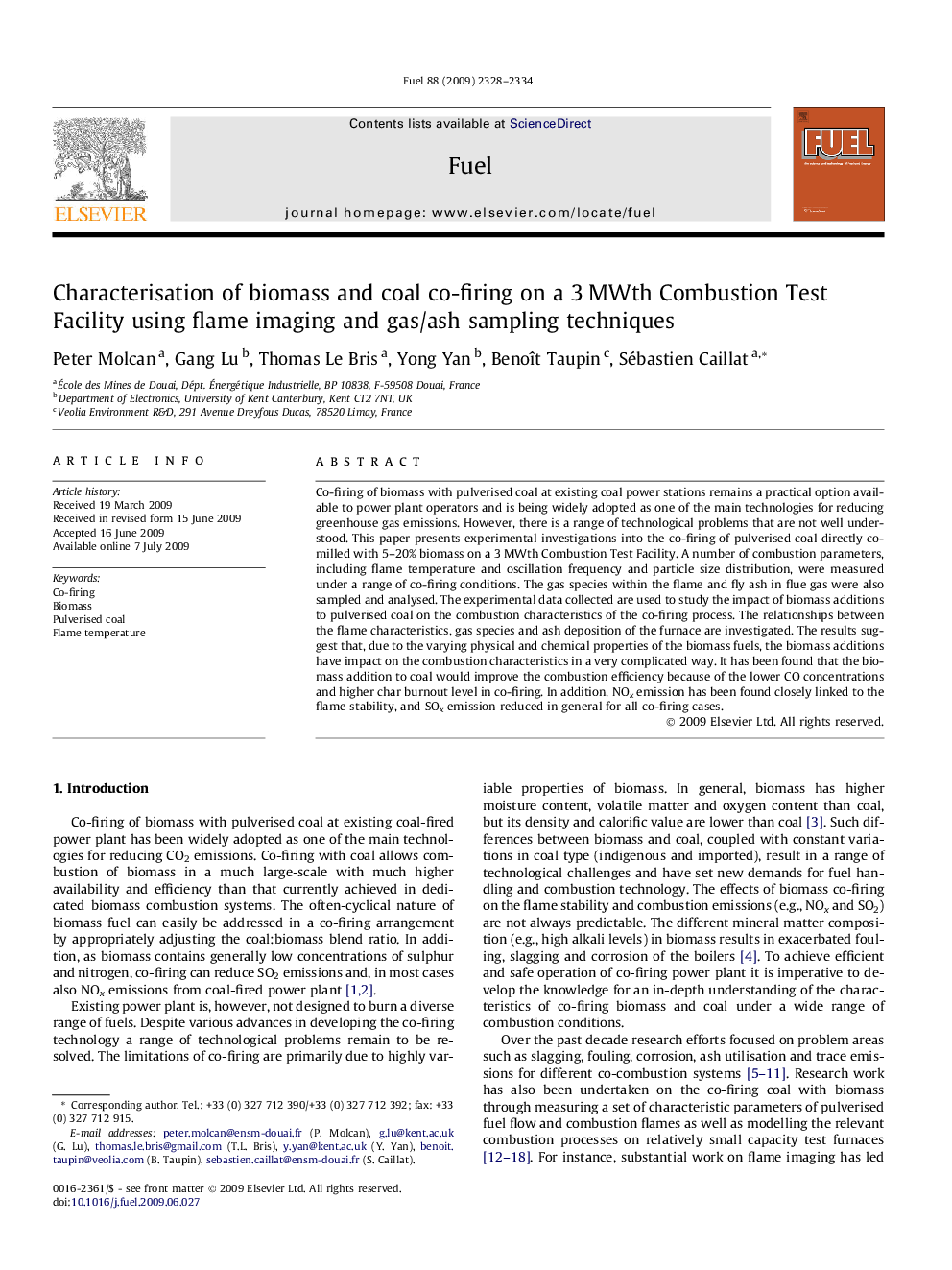| Article ID | Journal | Published Year | Pages | File Type |
|---|---|---|---|---|
| 207837 | Fuel | 2009 | 7 Pages |
Co-firing of biomass with pulverised coal at existing coal power stations remains a practical option available to power plant operators and is being widely adopted as one of the main technologies for reducing greenhouse gas emissions. However, there is a range of technological problems that are not well understood. This paper presents experimental investigations into the co-firing of pulverised coal directly co-milled with 5–20% biomass on a 3 MWth Combustion Test Facility. A number of combustion parameters, including flame temperature and oscillation frequency and particle size distribution, were measured under a range of co-firing conditions. The gas species within the flame and fly ash in flue gas were also sampled and analysed. The experimental data collected are used to study the impact of biomass additions to pulverised coal on the combustion characteristics of the co-firing process. The relationships between the flame characteristics, gas species and ash deposition of the furnace are investigated. The results suggest that, due to the varying physical and chemical properties of the biomass fuels, the biomass additions have impact on the combustion characteristics in a very complicated way. It has been found that the biomass addition to coal would improve the combustion efficiency because of the lower CO concentrations and higher char burnout level in co-firing. In addition, NOx emission has been found closely linked to the flame stability, and SOx emission reduced in general for all co-firing cases.
